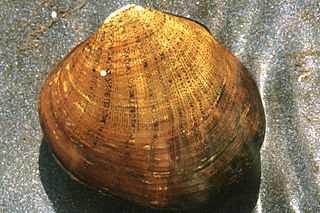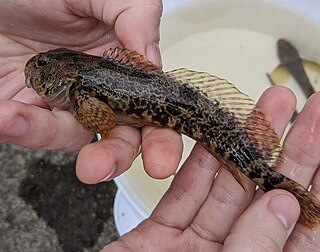- ? complanata Lightfoot
- Elliptio complanata subsp. complanata(Lightfoot) 1786
- Elliptio complanatus(Lightfoot) 1786
- Elliptio complanatus subsp. catawbensis(I.Lea, 1857)
- Elliptio complanatus subsp. complanatus(Lightfoot) 1786
- Elliptio complanatus subsp. cuvierianus(I.Lea, 1853)
- Elliptio complanatus subsp. jejunus(I.Lea, 1838)
- Elliptio complanatus subsp. northamptonensis(I.Lea, 1862)
- Elliptio complanatus subsp. quadrilaterus(I.Lea, 1863)
- Elliptio complanatus subsp. subinflatus(Conrad, 1835)
- Elliptio errans(I.Lea, 1857)
- Elliptio geminus(I.Lea, 1856)
- Elliptio insulsus(I.Lea, 1857)
- Elliptio nubilus(I.Lea, 1868)
- Elliptio rostrum(I.Lea, 1862)
- Elliptio spadiceus(I.Lea, 1857)
- Elliptio subinflatus(Conrad, 1835)
- Elliptio violaceus(Spengler, 1793)
- Elliptio violaceus subsp. cuvierianus(I.Lea, 1853)
- Elliptio violaceus subsp. jejunus(I.Lea, 1838)
- Elliptio violaceus subsp. northamptonensis(I.Lea, 1862)
- Elliptio violaceus subsp. subinflatus(Conrad, 1835)
- Elliptio violaceus subsp. wheatleyi(I.Lea, 1857)
- Margarita (Unio) complanata(Lightfoot) 1786
- Margarita (Unio) griffithianus(I.Lea, 1834)
- Margarita (Unio) paliatusI.Lea, 1836
- Margaritana decumbens(I.Lea, 1861)
- Margaritifera decumbens(I.Lea, 1861)
- Margaritifera decumbens(I.Lea, 1861)
- Margaron (Unio) abbevillensis(I.Lea, 1857)
- Margaron (Unio) aberrans(I.Lea, 1863)
- Margaron (Unio) baldwinensis(I.Lea, 1859)
- Margaron (Unio) beaverensis(I.Lea, 1868)
- Margaron (Unio) burkensis(I.Lea, 1859)
- Margaron (Unio) catawbensis(I.Lea, 1857)
- Margaron (Unio) chathamensis(I.Lea, 1863)
- Margaron (Unio) complanatus(Lightfoot) 1786
- Margaron (Unio) contractus(I.Lea, 1857)
- Margaron (Unio) curatus(I.Lea, 1863)
- Margaron (Unio) cuvierianus(I.Lea, 1853)
- Margaron (Unio) datus(I.Lea, 1868)
- Margaron (Unio) decumbens(I.Lea, 1861)
- Margaron (Unio) errans(I.Lea, 1857)
- Margaron (Unio) exactus(I.Lea, 1858)
- Margaron (Unio) fuliginosus(I.Lea, 1845)
- Margaron (Unio) gastonensis(I.Lea, 1863)
- Margaron (Unio) geminus(I.Lea, 1856)
- Margaron (Unio) griffithianus(I.Lea, 1834)
- Margaron (Unio) humerosus(I.Lea, 1868)
- Margaron (Unio) indefinitus(I.Lea, 1863)
- Margaron (Unio) insulsus(I.Lea, 1857)
- Margaron (Unio) jejunus(I.Lea, 1838)
- Margaron (Unio) mecklenbergensis(I.Lea, 1863)
- Margaron (Unio) mediocris(I.Lea, 1863)
- Margaron (Unio) neusensis(I.Lea, 1858)
- Margaron (Unio) northamptonensis(I.Lea, 1862)
- Margaron (Unio) nubilus(I.Lea, 1868)
- Margaron (Unio) paliatus(I.Lea, 1836)
- Margaron (Unio) percoarctatus(I.Lea, 1857)
- Margaron (Unio) perlucens(I.Lea, 1863)
- Margaron (Unio) postellii(I.Lea, 1858)
- Margaron (Unio) protensus(I.Lea, 1865)
- Margaron (Unio) purus(I.Lea, 1858)
- Margaron (Unio) quadrilaterus(I.Lea, 1863)
- Margaron (Unio) raeensis(I.Lea, 1859)
- Margaron (Unio) raleighensis(I.Lea, 1863)
- Margaron (Unio) rostrum(I.Lea, 1862)
- Margaron (Unio) savannahensis(I.Lea, 1857)
- Margaron (Unio) spadiceus(I.Lea, 1857)
- Margaron (Unio) squameus(I.Lea, 1862)
- Margaron (Unio) subflavus(I.Lea, 1857)
- Margaron (Unio) subinflatus(Conrad, 1835)
- Margaron (Unio) uhareensis(I.Lea, 1868)
- Margaron (Unio) vicinus(I.Lea, 1856)
- Margaron (Anodonta) virens(I.Lea, 1857)
- Margaron (Unio) weldonensis(I.Lea, 1863)
- Mya complanata(Lightfoot) 1786
- Mya rigidusWood, 1828
- Unio abbevillensisI.Lea, 1857
- Unio aberransI.Lea, 1863
- Unio amplusI.Lea, 1872
- Unio (Elliptio) aurataRafinesque, 1820
- Unio baldwinensisI.Lea, 1859
- Unio beaverensisI.Lea, 1868
- Unio burkensisI.Lea, 1859
- Unio cariniferaLamarck, 1819
- Unio catawbensisI.Lea, 1857
- Unio chathamensisI.Lea, 1863
- Unio cirratusI.Lea, 1874
- Unio coarctataLamarck, 1819
- Unio (Elliptio) complanatus(Lightfoot) 1786
- Unio (Elliptio) complanatus subsp. jejunusI.Lea, 1838
- Unio complanatus subsp. mainensisRich, 1915
- Unio (Elliptio) complanatus subsp. quadrilaterusI.Lea, 1863
- Unio complanatus subsp. subinflatusConrad, 1835
- Unio contractusI.Lea, 1857
- Unio curatusI.Lea, 1863
- Unio curvatusI.Lea, 1872
- Unio cuvierianusI.Lea, 1852
- Unio datusI.Lea, 1868
- Unio decumbensI.Lea, 1861
- Unio differtusI.Lea, 1872
- Unio dissimilisI.Lea, 1872
- Unio erransI.Lea, 1857
- Unio exactusI.Lea, 1858
- Unio fluviatilisGreen, 1827
- Unio fuliginosusI.Lea, 1845
- Unio gastonensisI.Lea, 1863
- Unio geminusI.Lea, 1857
- Unio georginaLamarck, 1819
- Unio glabrataLamarck, 1819
- Unio griffithianusI.Lea, 1834
- Unio humerosoidesI.Lea, 1868
- Unio humerosusI.Lea, 1868
- Unio indefinilusI.Lea, 1863
- Unio indefinitusLea, 1863
- Unio infulgensI.Lea, 1874
- Unio infuscusI.Lea, 1872
- Unio insulsusI.Lea, 1857
- Unio irwinensisI.Lea, 1872
- Unio jejunusI.Lea, 1838
- Unio ligatusI.Lea, 1872
- Unio mecklenbergensisI.Lea, 1863
- Unio mediocrisI.Lea, 1863
- Unio neusensisI.Lea, 1858
- Unio northamptonensisI.Lea, 1862
- Unio nubilusI.Lea, 1868
- Unio oblongusI.Lea, 1872
- Unio percoarctatusI.Lea, 1857
- Unio perlucensI.Lea, 1863
- Unio postelliiI.Lea, 1858
- Unio protensusI.Lea, 1865
- Unio (Arconaia) provancherianaPilsbry, 1890
- Unio pullatus subsp. majusculusde Gregorio, 1914
- Unio purpurascensLamarck, 1819
- Unio purpureusSay, 1817
- Unio purusI.Lea, 1858
- Unio quadrilaterusI.Lea, 1863
- Unio raeensisI.Lea, 1859
- Unio raleighensisI.Lea, 1863
- Unio rarisulcataLamarck, 1819
- Unio ratusI.Lea, 1872
- Unio rhombulaLamarck, 1819
- Unio rigidusWood, 1828
- Unio (Elliptio) roanokensis subsp. northamptonensisI.Lea, 1862
- Unio roanokoidesI.Lea, 1868
- Unio rostrumI.Lea, 1862
- Unio santeensisI.Lea, 1871
- Unio savannahensisI.Lea, 1857
- Unio spadiceusI.Lea, 1857
- Unio squameusI.Lea, 1862
- Unio subflavusI.Lea, 1857
- Unio subinflatus(Conrad, 1835)
- Unio (Elliptio) subinflatusConrad, 1835
- Unio subolivaceusI.Lea, 1874
- Unio subparallelusI.Lea, 1872
- Unio subsquamosusI.Lea, 1872
- Unio sulcidensLamarck, 1819
- Unio tortuosusG.B.Sowerby II, 1868
- Unio uhareensisI.Lea, 1868
- Unio vicinusI.Lea, 1857
- Unio violaceusSpengler, 1793
- Unio virensI.Lea, 1857
- Unio virginianaLamarck, 1819
- Unio weldonensisI.Lea, 1863
- Unio wheatleyiI.Lea, 1857
- Unio yadkinensisI.Lea, 1872
|













